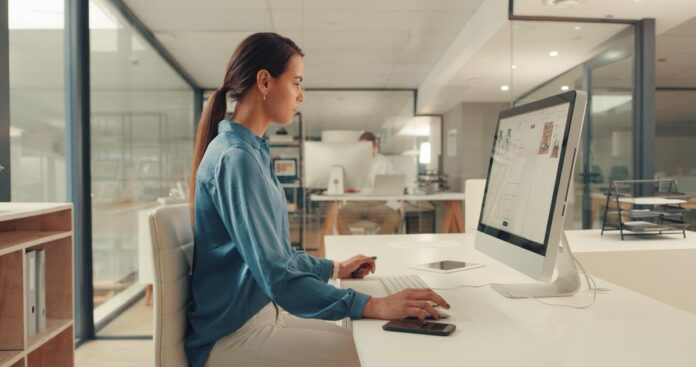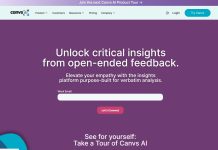
The UX Design industry is changing fast, and it’s hard to keep up with all the new trends. But after doing some research and asking our experienced UX Designers, we’ve prepared a list of the significant trends in the industry.
If you ask any web development agency how important UX is, they will tell you it’s the most important part of a project. But as time goes on, more and more people are beginning to understand what exactly defines a great user experience.
So let us get into the UX Design trends for 2022:
1. Voice User Interface (VUI)
We live in a world controlled by voice, and new devices are allowing us to control different aspects of our life with the help of VUI. As a result, voice user interface is becoming more popular each day.
For example, if you want to look something up on your phone, you can do this using Google Assistant even without touching the screen.
This is still far from perfect, but it’s getting better day by day.
2. AR & VR
Virtual Reality (VR) and Augmented Reality (AR) are also becoming more popular each day with the arrival of new devices that support them. However, the biggest problem with both these technologies is that they’re still far from perfect, and nobody knows if they will ever be that popular in the future.
But it’s important to mention that there are a lot of companies working on both technologies (like Facebook with Oculus Rift, Google with Daydream and HTC with Vive), so we can expect them to get better over time.
3. Chatbots
Chatbots are here to stay. Most companies need help with customer service, and chatbots are the perfect way to do it.
According to Forbes, over 85% of businesses worldwide will be using chatbots by 2022. Today, there are about 10,000 bots on Facebook Messenger alone. They come in different shapes and sizes and can be used for many different tasks.
The UX of chatbots is still far from perfect, but it’s improving every day as they get smarter and new ones are being released each month.
4. Mobile UX
We live in a world where most people are using mobile devices first and PC’s second. That’s why many UX designers are now designing for mobile-first.
This means that all new projects should start with mobile design (at least most of them) before designing for desktops.
5. Artificial Intelligence (AI)
Artificial intelligence is definitely the biggest trend in the UX Design industry right now. It’s slowly getting better each day, with new AI-powered devices being released each month.
But what exactly is this?
AI is a set of algorithms that are developed using computer science, mathematics and probability. It can learn by itself (more like memorizing) and make decisions on its own using that knowledge.
Today AI is used primarily on tech companies like Google, Apple, Facebook and Amazon. But it’s also becoming more important each day for UX Designers as they find new ways to use it in their work.
6. UX Design Meets Customer Service
UX Designers have been working with customer service for a while now, but it has become more common since companies have started using chatbots and AI to solve customers’ problems.
But what does this mean? It simply means that UX Designers should be working closely with customer service to make sure that customers’ needs are met and that there is no need for chatbots or AI.
7. Interactive Design & Motion Graphics
Motion graphics and interactive design will merge together, creating a new type called ‘interactive motion graphic’. This means that we will see more and more websites and apps using motion graphics and animation to guide users throughout the whole user experience.
As a result, this will also force UX Designers to create better motion graphic templates so designers can keep up with the trends and deliver a good looking new interactive design.
8. Personalised Marketing
Today, personalised marketing uses big data to understand how different customers use your product or service to special market offers, products, services, etc., depending on their previous purchases, browsing activity, interests, etc.
Personalised marketing will become more interactive as companies can send different content, offers, and products to their customers depending on what they’re looking for. This means that UX Designers will need to work closely with marketing departments to create personalised user experiences that will keep the customer engaged and satisfied.
9. More Growth Hacking And Lean UX
Growth hacking is becoming more and more popular these days as start-ups are trying to use it for their benefit.
But what exactly is growth hacking?
According to Wikipedia, “it’s a process of rapid experimentation across marketing channels, product development and other areas of the business to identify the most efficient ways to grow a company”.
Usually, this comes from a Lean UX approach as they combine both to build products quickly and learn what will work best from the market. UX Designers should therefore be well familiar with growth hacking as they can now use it in their projects.
10. Micro Interaction
Micro-interactions are like small elements on your website or app that are not necessarily part of the core functionality but enhance or add value to your users’ experience.
For example, when you get a Like on Facebook, this is considered a micro-interaction because it doesn’t do anything major besides giving you Likes. But still, micro-interactions are important for UX designers to understand because they can learn what their users appreciate from them. So, for example, they can learn where to place a Like button on their website or app to make it easier for the user to find it.
Conclusion
As you can see from this post, AI and its advanced technologies are becoming more popular as tech companies use them in their work. As a result, UX Designers should be aware of the latest trends with AI and start learning about them to keep up with today’s changing market.
So what do you think? What other trends do you see emerging from AI?











